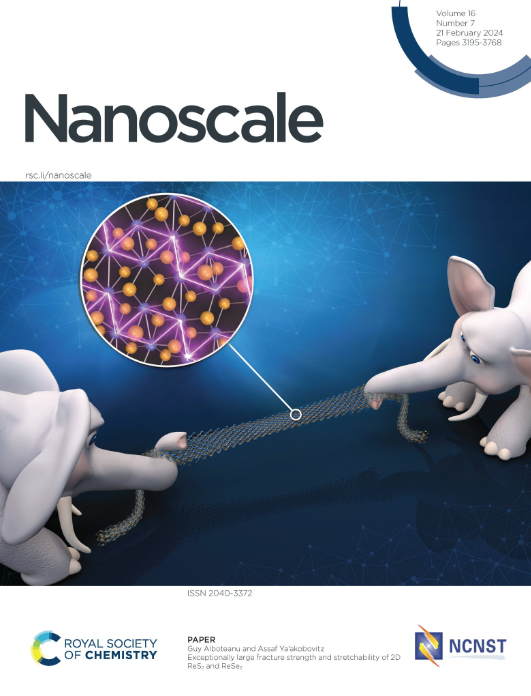具有可控低语廊模式的多色偏振激光器异质结构纳米片
IF 5.1
3区 材料科学
Q1 CHEMISTRY, MULTIDISCIPLINARY
引用次数: 0
摘要
下一代集成电路的构建模块需要超小尺寸的高效光电器件,其中可调颜色增强了各种应用的可行性。本文利用三氮化氮材料(GaN/InGaN/GaN)组成的盘形轴向异质结构,利用光约束效应和有源波导,实现了可调谐的多色纳米激光器。在异质结构纳米片中,激子-极化子的发展在共振区附近诱导出独特的特征,并且低语通道模式的形成促进了氮化镓偏振激光的光学增益过程。同样,InGaN的极化激射也出现了,尽管量子阱结构中的小增益体积阻碍了强放大。值得注意的是,GaN和InGaN的激光特性不同,表明在量子阱结构中具有不同的极化行为。合金系统使激光颜色在可见区域可调,而低语廊模式提供激光的独立控制。因此,我们首次利用异质结构光盘建立了可调谐双色极化纳米激光器,有望利用光约束效应和有源波导的纳米光子器件。本文章由计算机程序翻译,如有差异,请以英文原文为准。
Heterostructure Nanodisks for Multicolor Polariton Lasers with Controllable Whispering–Gallery Modes
Highly efficient optoelectronic devices of ultrasmall sizes are demanded for building blocks of next-generation integrated circuits, where tunable color enhances the feasibility of various applications. Here, we realize tunable multicolor nanolasers using disk-shaped axial heterostructures composed of III-nitride materials (GaN/InGaN/GaN), leveraging the optical confinement effect and active waveguiding. In heterostructure nanodisks, the development of exciton–polariton induces unique features near the resonance regime and the formation of whispering–gallery modes facilitates optical gain processes for the polaritonic lasing of GaN. Likewise, the polaritonic lasing of InGaN emerges, although the small gain volume in the quantum well structure hinders the strong amplification. Notably, the characteristics of lasing differ between GaN and InGaN, suggesting a distinctive polariton behavior in quantum well structures. The alloyed systems enable tunable laser colors in the visible region, while whispering–gallery modes afford independent control of lasing. Therefore, we establish tunable dual-color polariton nanolasers using heterostructure disks for the first time, promising nanophotonic devices to take advantage of the optical confinement effect and active waveguiding.
求助全文
通过发布文献求助,成功后即可免费获取论文全文。
去求助
来源期刊

Nanoscale
CHEMISTRY, MULTIDISCIPLINARY-NANOSCIENCE & NANOTECHNOLOGY
CiteScore
12.10
自引率
3.00%
发文量
1628
审稿时长
1.6 months
期刊介绍:
Nanoscale is a high-impact international journal, publishing high-quality research across nanoscience and nanotechnology. Nanoscale publishes a full mix of research articles on experimental and theoretical work, including reviews, communications, and full papers.Highly interdisciplinary, this journal appeals to scientists, researchers and professionals interested in nanoscience and nanotechnology, quantum materials and quantum technology, including the areas of physics, chemistry, biology, medicine, materials, energy/environment, information technology, detection science, healthcare and drug discovery, and electronics.
 求助内容:
求助内容: 应助结果提醒方式:
应助结果提醒方式:


